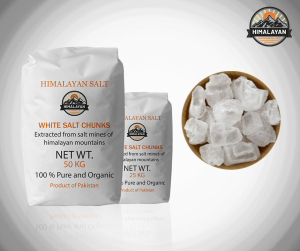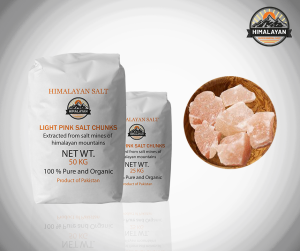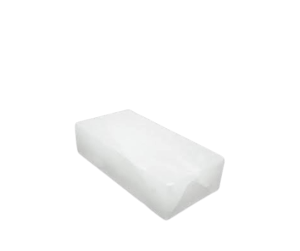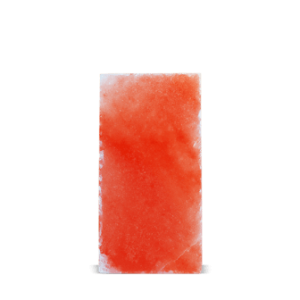A mineral lick or animal lick is a natural or artificial deposit of salt mixed with other trace minerals. Animals often seek out these salt licks to fulfill their daily salt intake. They can occur naturally in the environment or be created artificially.
For horse owners or those who work closely with horses, the importance of salt in their diet is well-known. As it is challenging to meet horses’ daily salt requirements solely through feed, the placement of salt licks for horses in convenient locations throughout the land has become essential.
The Importance of Salt for Horses
Salt is essential for horses as it supports their growth and various bodily functions, albeit in small quantities. Unlike humans, horses cannot satisfy their salt cravings by snacking on salty treats. Instead, they exhibit peculiar behavior, signaling to their owners their need for salt. This emphasizes the significance of providing horses with an adequate salt supply to meet their dietary requirements and ensure their overall health and well-being.
Salt, comprised of sodium and chloride, plays an important role in facilitating crucial functions within a horse’s body. This important compound helps in carrying out important physiological processes necessary for the horse’s overall well-being and optimal functioning.
The infusion of sodium and chloride into a horse’s bloodstream allows for ionization, enabling the transmission of crucial electrical signals throughout the body. This process is essential for the proper functioning of the nervous system in horses.
Just like how you crave a refreshing lemonade with a pinch of salt to quench your thirst on scorching days, horses also rely on sodium to signal thirst to their brains when they are dehydrated. Sodium plays a crucial role in sending thirst signals, prompting horses to drink water and maintain proper hydration levels.
Sodium plays a vital role in regulating the movement of glucose across cell membranes. This ensures that important functions relying on glucose, such as energy production and muscle development, occur efficiently. Proper sodium levels are essential to prevent fatigue and promote optimal muscle function in horses.
Considering the significance of sodium, it is important to provide salt licks for horses within their living areas to ensure they have access to this essential mineral.
Salt, in any form, is essential for horses to fulfill their daily sodium requirements, supporting proper growth and functioning of various organs within their bodies.
What Are The Effects Of Salt Deficiency In Horses?
If a horse experiences salt deficiency, it may exhibit signs such as excessive licking of salt-containing objects to compensate for the lack of salt. Other symptoms include decreased appetite, reduced water intake, diminished skin health, difficulties in chewing, impaired gait, and coordination issues.
Benefits of Himalayan Salt for Horses
When it comes to providing salt to horses, it can be a challenge to find the best option. Horses are selective eaters and won’t lick a salt lick they don’t like. That’s why it’s crucial to choose a salt that is natural, pure, and not overly salty in taste.
Himalayan salt meets all these criteria and should be the top choice for setting up mineral salt licks for horses. This type of salt is extracted from salt deposits found in Pakistan and contains 84 trace minerals that are highly beneficial for equines.
Himalayan salt licks for horses are solid blocks that are designed to prevent horses from biting off chunks of salt. The densely packed crystalline structure ensures that horses can only lick the salt, preventing excessive intake.
One of the remarkable advantages of using mineral salt blocks made with Himalayan salt is their durability in harsh weather conditions. Once set up, you can forget about them until it’s time to replace the salt lick.
The benefits of Himalayan salt licks for horses are numerous, making it the best option available. However, it’s important to consider that horses have sensitive tongues, so excessive licking can cause soreness. To address this, the Himalayan salt feed additive can be mixed with their regular feed to provide the daily dose of salt.
Himalayan salt is the ideal choice for salt licks for horses due to its natural purity, rich mineral content, and suitability for horses’ taste preferences. Ensure your horses get their required salt intake by opting for Himalayan salt licks or incorporating the feed additive into their diet.
To ensure your horses receive the necessary salt intake, Himalayan lick salt is the recommended choice. With its natural composition and beneficial mineral content, it offers the ideal solution for meeting their needs. Whether you choose to incorporate Himalayan salt into their feed or provide a mineral lick, your horses will benefit from its purity and essential minerals. Opt for Himalayan salt to support your horses’ well-being and maintain their optimal health.
Is It Possible For A Horse To Consume Excessive Amounts Of Salt?
Horses possess a natural self-regulation mechanism when it comes to their salt intake. They instinctively seek out natural salt licks to fulfill their salt needs. If a horse happens to consume an excess amount of salt, it is efficiently eliminated through urine. Salt toxicity is an uncommon concern in horses, as they naturally lose salt through various means, such as sweating and physical exertion. This ensures that horses rarely consume more salt than their bodies require.
Avoid These Mistakes When Using Salt Licks for Horses
Using salt licks for horses can be a beneficial practice, but it’s important to avoid certain mistakes to ensure the well-being of your horses. Here are some common mistakes to avoid when using salt licks:
Placing the salt lick in an enclosed space: If you choose to place the salt lick inside the stable, be cautious about the horse’s access to water. Excessive licking of the salt lick can lead to increased thirst and excessive urination. Ensure that there is ample fresh water available to prevent dehydration.
Ignoring the horse’s individual needs: Different horses have different salt requirements based on factors such as age, activity level, and health conditions. It’s crucial to consider each horse’s specific needs and adjust the salt intake accordingly. Consult with a veterinarian to determine the appropriate amount of salt for each horse.
Neglecting to monitor salt consumption: Keep an eye on how much salt your horses are consuming. Excessive salt intake can lead to electrolyte imbalances and other health issues. Regularly observe the behavior and overall well-being of your horses to ensure they are not overindulging in the salt lick.
Using low-quality salt licks: Opt for high-quality salt licks, such as Himalayan rock salt, that are 100% natural and free from additives or harmful substances. Low-quality salt licks may contain impurities that can be detrimental to your horse’s health. Choose reputable brands and ensure the salt lick is made from pure, unrefined salt.
Neglecting proper hygiene and maintenance: Salt licks can accumulate dirt, dust, and debris over time. It’s important to regularly clean and maintain the salt licks to prevent contamination and ensure the horses are consuming clean salt. Replace the salt lick when it becomes too small or contaminated.
By avoiding these mistakes and implementing proper salt lick usage, you can provide your horses with the necessary salt intake while promoting their overall health and well-being. Always prioritize the individual needs of your horses and consult with professionals when necessary.




